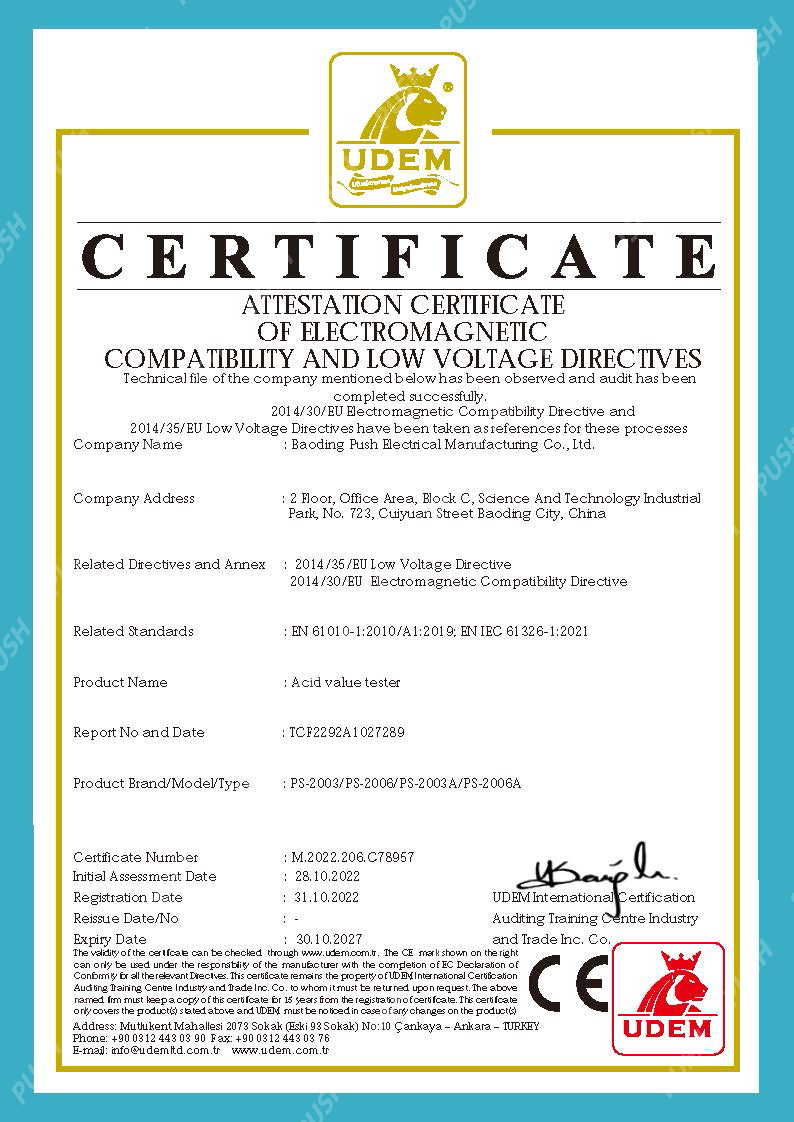 English
English


AC and DC High Voltage Tester for Electrical Insulation Testing and Safety Assessment Solutions
Understanding AC/DC Withstand Voltage Testers Ensuring Safety and Reliability in Electrical Devices
In the realm of electrical testing, safety and reliability are paramount. One of the crucial tools employed in this field is the AC/DC withstand voltage tester, a device designed to assess the insulation integrity and electrical strength of various electrical components and systems. This article will delve into the importance of withstand voltage testing, the operational principles of these testers, their applications, and best practices for their use.
What is a Withstand Voltage Test?
A withstand voltage test, also known as hipot testing (high potential test), is performed to evaluate the dielectric strength of electrical insulation. The primary objective of this test is to ensure that electrical devices can operate safely under high voltage conditions without breaking down. During the test, a voltage that exceeds the normal operating voltage of the equipment is applied for a specified duration. This process serves to uncover any weaknesses in the insulation material that could lead to electrical failures, arcing, or potential fire hazards.
AC vs. DC Testing
Withstand voltage testers can typically produce both AC (alternating current) and DC (direct current) voltages. Each type of testing has its distinct advantages and is chosen based on the specific requirements of the application.
- AC Testing AC withstand voltage testing simulates more realistic operating conditions for many electrical devices, particularly those that are inherently powered by alternating current. The fluctuating voltage can expose gradual insulation breakdowns that might not be apparent under DC testing. It's commonly used in applications involving power transformers, generators, and motor circuits.
- DC Testing Conversely, DC tests are often utilized for equipment where permanent insulation strength is necessary, such as with cables and circuit boards. The steady nature of DC voltage can reveal insulation defects that are influenced by moisture or contaminants.
Applications of Withstand Voltage Testing
Withstand voltage testers are integral to various industries, including manufacturing, aerospace, automotive, and telecommunications. Their applications include
ac dc withstand voltage tester

2. Preventive Maintenance Regular testing of electrical equipment in industrial settings can help predict failures before they occur, minimizing the risk of costly downtime and ensuring uninterrupted operations.
3. Certification and Compliance Organizations often require testing for certification purposes to demonstrate that their products can withstand electrical stresses without compromising safety.
Best Practices for Using Withstand Voltage Testers
To achieve reliable and accurate results, users must adhere to proper testing practices, including
1. Calibration Regular calibration of the tester ensures that voltage output is accurate and consistent, maintaining test integrity.
2. Safety Precautions Given the high voltages involved, operators should employ appropriate personal protective equipment (PPE) and adhere to safety protocols to minimize risks.
3. Understanding Test Parameters It is crucial to set the correct voltage level and duration based on the device under test (DUT). Insufficient or excessive voltage can lead to misleading results or damage to the DUT.
4. Documentation Maintaining thorough records of all tests conducted enables better tracking of equipment performance over time and assists with compliance audits.
Conclusion
AC/DC withstand voltage testing is a vital process in the manufacturing and maintenance of electrical devices. By evaluating the insulation quality and electrical strength, these tests help prevent electrical failures that could lead to serious incidents. Awareness and adherence to best practices in testing can significantly enhance safety and reliability in electrical systems, thereby protecting both equipment and personnel. As technology advances, the significance of these tests will only continue to grow, making them an indispensable part of electrical product development and safety assurance.
-
Differences between open cup flash point tester and closed cup flash point testerNewsOct.31,2024
-
The Reliable Load Tap ChangerNewsOct.23,2024
-
The Essential Guide to Hipot TestersNewsOct.23,2024
-
The Digital Insulation TesterNewsOct.23,2024
-
The Best Earth Loop Impedance Tester for SaleNewsOct.23,2024
-
Tan Delta Tester--The Essential Tool for Electrical Insulation TestingNewsOct.23,2024





